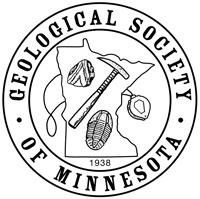Seminar Lab Date:
Seminar Lab presenter:
Seminar Lab Subject:
Seminar Lab Location :
2725 University Ave SE, Minneapolis, MN 55414
Seminar Lab Details:
The first meeting of the Geological Society of Minnesota for 2022-2023 is the return of the Fall Banquet at U Garden Restaurant (http://www.ugardenrestaurant.com/), 2725 University Ave SE, Minneapolis, MN 55414, (612) 378-1255, near the East Bank U of MN campus. This is the same location as the Spring Banquet held in May, 2022. The restaurant is on the north side of University Ave SE, east of 27th Ave SE. Map There is a parking lot behind the restaurant.
The banquet starts at 5:00 PM. No reservation or registration is needed. We recommend the buffet, which is priced at $17.95 + tax & tip. Hot tea and other beverages (except water) are extra. Ordering from the menu at the posted price is also an option. To make payment easy, we encourage everyone to plan to pay using cash. The restaurant does not accept checks.
You may come for just the lecture, skipping the meal if you wish; however we encourage you to enjoy the meal also, as the restaurant appreciates our business in return for hosting this event.
During the banquet, the Video Library will be open for returns and rentals as usual.
Following the banquet, starting around 6:30 PM, is our Annual Meeting, during which we elect Board members for the upcoming calendar year. Names of nominees for the Board will be sent to GSM members by e-mail prior to the meeting.
Following the meeting, around 7 PM, will be our first lecture of 2022-2023. As with all GSM lectures, this lecture is free and open to the public.
Abstract: Quartzite is considered a unique “signature” bedrock unit, and here’s why: quartzite typically contains >95% quartz grains and clasts. It is compositionally ultramature, but texturally immature (angular and rounded clasts). These characteristics indicate derivation from an uplifted and eroded craton that has undergone long periods of deep chemical weathering. Thus, quartzite signals a major shift in craton tectonism. The Sioux Quartzite in southwestern Minnesota and similar deposits scattered about the northern midcontinent are such units. This presentation is a largely photographic tour that highlights features of deposition, alteration, deformation, erosion, global paleoclimates, tectonic significance, microbia, and historic and modern land use. It documents more fully some of the attributes that were described in MGS Report of Investigations 32 and other publications, and some features that were not.
Topics include:
- Background and context
- Basin geometry and content
- Outcrop distribution and attributes
- Depositional features
- Environments of deposition
- Pseudo-biogenic features
- Alteration features
- Deformation features
- Glaciogenic features
- Anthropogenic features
- Wildlife
Biography: Mark Jirsa was a senior scientist and geologic mapper with the Minnesota Geological Survey— recently retired. He obtained a BS degree from the University of Wisconsin, and an MS from the University of Minnesota-Duluth (1980). Mapping and research during 40-some years utilizes the combination of geophysical, geochemical, and geochronologic data derived from drill core and outcrop to improve and convey the understanding of Minnesota’s bedrock.
Affiliations:
Minnesota Geological Survey (MGS), University of Minnesota-Twin Cities;
Institute on Lake Superior Geology (ILSG)
Licensed Professional Geologist #30329 (MN)
